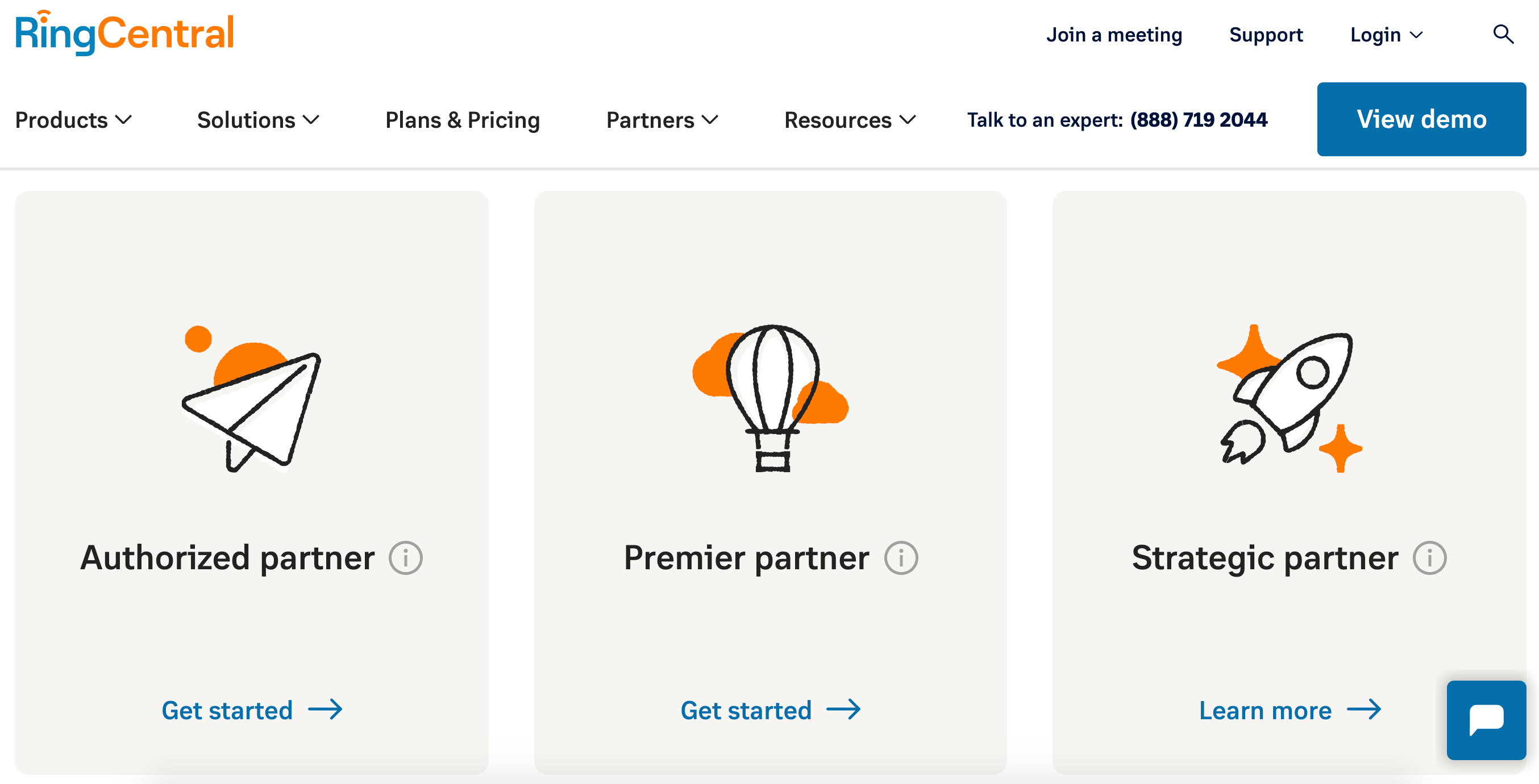You and your potential tech partner have a partnership kickoff call. Your partner’s like the best bud you’ve always hoped for. Your visions align, you agree on the joint value proposition, and you even virtually high five.
And then there’s a pause — not so different from that feeling at the end of a fancy dinner when you wonder who should pick up the bill. In this case, the question is “You’re building the integration, right?”.
We’ve compiled four questions to help you determine the answer to this stress-inducing question before doing the awkward dance with your partner.
Psst! Stick around until the end for our gallery of awkward dances from movies and shows we love.
#1 Who’s Trying to Break Into Whose Ecosystem?
Another way to think about this: Who considers this a strategic partnership? If your partner program is new, maybe you’re looking to team up with a potential tech partner to:
- Access their customer list
- Satisfy an integration request from a strategic account or a high volume of customer accounts (and improve retention)
- Expand to a new market
- Access theirpartner ecosystem
For example:
RingCentral, a unified communications as a service (UCaaS) platform, typically builds integrations with their most strategic partners, like Google, Salesforce, and Microsoft.
For RingCentral’s “Premier” partners (or second partner tier), RingCentral’s team makes it easy for potential partners to build integrations on top of their platform and go to market quickly. RingCentral provides its premier partners with templates and resources to ensure both teams have what they need to communicate the value of the integration successfully. This includes:
- Templated pitch deck slides communicating the joint value proposition
- A fill-in-the-blank matrix to provide information about their “better together” messaging
- Enablement presentations for RingCentral’s solutions engineers
If you’re looking to your partners for help expanding into new verticals or markets, building the integration internally or making it easy for your partners to build the integration and prepare the go-to-market materials will be your best bet!
#2 What is the State of Each Partner’s Development Resources?
Development resources like APIs, team size, and the tools each partner uses to grow their tech ecosystem at scale play a part in whether you or your partner should build the integration.
Your APIs, Documentation, and Sandbox Environment
How easy are your APIs to use? Be honest, because the answer affects who can best develop integrations with your product. If you don’t have an open API, you’re going to carry the weight of building the integration.
“Easy” means:
- The availability of your APIs (including API documentation and no-code iPaaS support)
- The availability of a sandbox of your environment (do you have a full-featured sandbox?)
For example: If you have API documentation available, your partners and external developers will be able to manage more of the development lift than if you had no documentation. Additionally, providing a sandbox of your environment will allow your devs and your partners’ devs to build and test the integration before going live. This makes it easier for your tech partners to build out more complex integration functionalities — and makes the process of collaborating more pleasant and successful (while avoiding hiccups that could negatively impact your customers).
Alternatively, if you want to get the attention of a potential strategic partner that doesn’t have an open API, you may need to prove the business potential of the partnership first. Ways to validate the partnership include:
Showing the potential of the partnership in shared opportunities and in dollars can help you convince your partner to invest their resources in building the integration.
(The availability of your APIs and whether or not you can provide partners with a sandbox of your environment are two criteria that contribute to your tech ecosystem maturity. Take the tech ecosystem maturity diagnostic for free to learn the exact areas your tech partner program is excelling in and where it needs improvement.)
Dev Team Size
In addition to the state of your APIs, the size and scope of your development team can also play a role in deciding who builds the integration. If you only have a handful of developers and their time is split between your product roadmap and your integration roadmap, you’ll need to be selective about which integrations you build and when. If you have a robust development team with a dedicated group of developers focusing on integration development, you might have more flexibility around your integration roadmap.
iPaaS
There are also a handful of tools, like integration platform as a service (iPaaS) solutions and universal integration framework providers, that can make it easy for you or your partner to build integrations at scale.
For example: Typeform, a survey-building platform, invested in an iPaaS solution and went from 30 integrations to 100+ in just one year. Using an iPaaS solution like Typeform does could enable you to build integrations quickly using a templated and repeatable development framework. If you use an iPaaS solution, it may be easier for you to develop the integration rather than your partner (or vice versa).
“You always have to do this awkward dance with partners where you try to figure out who’s going to build the integration, and that could take ages. That conversation could delay the whole integration by months,” says Kabir Mathur, Head of Product Partnerships at Typeform. “We just decided we would invest [in iPaaS] and do it ourselves.”
#3 Which Partner Does the Integration Solve a Product Gap for?
Let’s say you’re a customer relationship management (CRM) platform, and you don’t have landing page capabilities built into your platform. You learn that your customers and prospects want to trigger email campaigns from landing page conversions. So, you initiate a conversation with a landing page builder like Unbounce to launch a partnership together. In this scenario, Unbounce already has a handful of existing integrations with CRMs, but you don’t have any integrations with landing page companies.
Since the partnership would fill a feature gap for your product, you’ll likely want to prioritize building the integration (and fast), while there’s not as much urgency for your partner to shift its existing integration roadmap and build the integration themselves.
#4 Which Partner Needs the Integration in Order to Accelerate a Big Deal?
Sometimes it’s not about how many customers ask for a particular integration but rather about how building that particular integration could impact a particular deal.
Let’s say your sales team has been working on closing an opportunity for months, and the finish line is finally in sight. In the negotiating phase, a top stakeholder requests a particular integration. In this case, the deal size outweighs the time and resources it would take your team to build the integration.
“A large company will invest in building the integration if it solves a pain point for their customers, or if it solves a pain point for a large enough customer,” says Brian Jambor, Head of Partnerships at Nacelle.
You can use a PEP like Crossbeam to validate the need for the integration and forecast the immediately addressable market with your potential partner. This way, during your pitch call with your potential partner, you’ll know exactly what the business opportunity is for them, and you’ll both leave the call happy and ready to get started on next steps.
An example of the immediately addressable market with hypothetical partner Lindros & Co.:
Immediately addressable market with hypothetical partner Lindros & Co. From the second edition of our Partner Playbook.
Use your PEP to understand the number of business opportunities you could have with your partner. These opportunities includes:
- The mutual customers you have with the partner who could potentially adopt the integration (leading to upsells, cross-selling opportunities, better retention, and improved churn rates)
- Your prospects and opportunities that overlap with your partner’s prospects, opportunities, and customers. These are the accounts that could become customers with the help of your partner (for example: by providing intros for your team into those accounts) and due to your team developing a “stickier” product that integrates with your partner’s product.
Additionally, if a group of your customers repeatedly ask for an integration, it’s time to prioritize developing it. When we launched our first tech partner ecosystem at Crossbeam, we identified tech partner categories, use cases, and specific tech partnerships to pursue according to feedback from our customers and our target verticals. Keep a running list of all of the integrations your customers request so you can tally up the amount of requests for each integration and plan your integration roadmap.
–
And now, what you’ve all been waiting for! 10 famous awkward dances:
–
Getting ready to grow your tech partner program? Our tech ecosystem maturity diagnostic can help you identify exactly what you should prioritize in order to level up. In just 14 questions, you’ll know how your tech ecosystem stacks up to your peers and what you could improve according to more than 30 criteria.

















